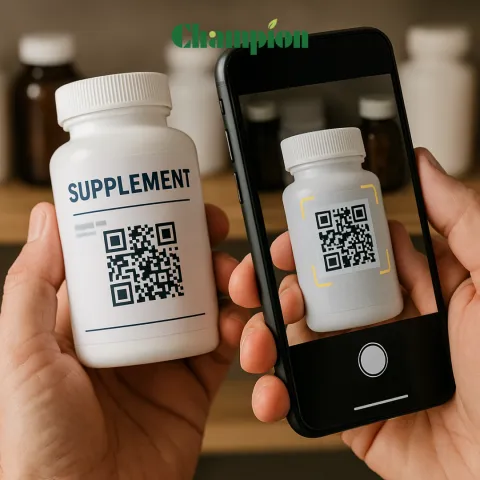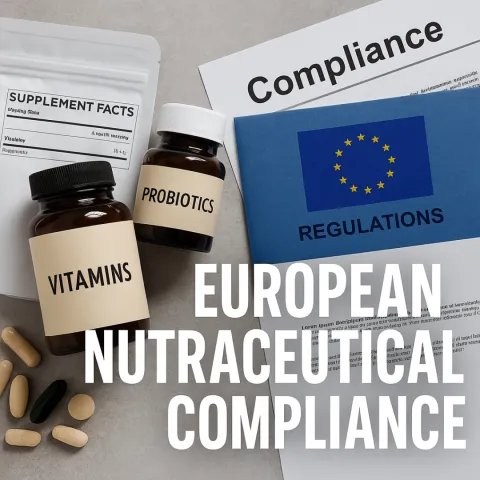Blog
30.Sep.2025
The Science of Efficacy: What Makes Ingredients “Clinically Proven”?

Introduction
The words “clinically proven” are everywhere in the supplement aisle, promising results and scientific backing. But what does it actually mean for an ingredient or product to claim clinical proof, and how can consumers, brands, and health professionals tell the difference between hype and real evidence? This article demystifies the “clinically proven supplements” label by breaking down evidence standards, clinical trial design, regulatory realities, and the actionable ways brands earn and communicate trust.What Does “Clinically Proven” Really Mean?
“Clinically proven” means the ingredient or product has been tested in human studies designed to measure health effects in real-world settings.- Clinical proof is stronger than “scientifically proven,” which can refer to lab or animal studies but not necessarily human results.canomiks
- Human clinical trials, especially randomized controlled trials (RCTs), are the gold standard for supporting health claims in supplements.
- However, there is no universal legal definition for “clinically proven,” especially in the US and many global markets—making transparency and context essential.
Clinical Evidence in Supplements: Types and Hierarchy
- In vitro & animal studies: Provide mechanistic support (how/why an ingredient might work) but rarely predict human efficacy.
- Observational studies: Reveal associations, but can’t prove cause/effect for a supplement’s impact.
- Human clinical trials:
- RCTs (Randomized Controlled Trials): Participants are randomly assigned to supplement or placebo/control, ideally “blinded” so they don’t know which they receive.
- Open-label or observational trials: Useful for early signals but subject to significant bias.
How Clinical Trials for Supplements Are Designed
Key Features of a High-Quality Supplement Trial:- Randomization: Participants are randomly assigned to groups to avoid selection bias.
- Blinding: Ideally double-blind (neither participants nor researchers know group assignments) to reduce placebo and observer effects.
- Placebo Control: A group gets an inactive “dummy” product for comparison—critical for credible results.
- Adequate Sample Size: Enough participants to detect a real difference and rule out random chance.
- Relevant Population: Study participants should match the real-world users of the supplement.
- Pre-specified Outcomes: Analysis focuses on outcomes/data points chosen before the trial begins (not cherry-picking positive results post hoc).
- Safety and Adverse Event Reporting: Systematic collection and disclosure of side effects, not just benefits.clinical-trials-bulgaria+1
When Clinical Proof Is Strong (and When It Isn’t)
- Robust: Large, placebo-controlled, double-blind RCTs, peer-reviewed and replicated by independent teams.
- Weak or misleading:
- Open-label or single-arm (everyone gets the product) with no placebo.
- Animal or cell studies only cited as “proof” for human claims.
- “Borrowed science”—citing studies on similar but not identical products/formulas.
- Unpublished or non-peer-reviewed results.
Regulatory Realities & Marketing “Clinically Proven” Claims
- US & most global markets: No legal definition of “clinically proven,” but false or misleading claims can lead to warnings, fines, and recalls.
- Labeling Best Practice: Brands must clearly cite the specific clinical evidence—ingredient(s), population, study type, and outcomes—to avoid misleading claims.
- Some countries (e.g., Singapore, EU) openly prohibit “clinically proven” without stringent clinical study evidence and regulatory review.
The Role of Preclinical and Analytical Testing
- Preclinical studies (in vitro/animal) provide rationale for efficacy and guide safety, dose, and study design, but do not substitute for proven human benefit.
- Quality control and ingredient analysis: Confirm label accuracy and absence of contaminants; critical for study credibility and consumer trust.
Case Study: Real-World Example of Supplement Clinical Trials
- A leading US supplement brand conducted a double-blind, placebo-controlled RCT in healthy adults to test its multi-ingredient brain health formula.
- The trial measured cognitive performance and subjective well-being using validated scales at baseline, 6, and 12 weeks.
- Only after statistically significant improvements (versus placebo) and no safety issues could the product be fairly advertised as “clinically proven” for those outcomes.
Why True Clinical Proof Matters for Brands and Consumers
- Consumer protection: Reduces risk of wasted money, ineffective or unsafe products, and regulatory action.
- Market differentiation: Brands using credible clinical evidence and transparent disclosures can command higher trust and pricing premium.
- Science credibility: Supplements with proven efficacy enhance the reputation and future growth of the entire nutrition industry.
Next-Gen Clinical Science: Digital Trials, Biomarkers, and AI
- Increasing use of digital health tools (wearables, apps) to collect real-time trial data and increase objectivity.
- Biomarker-driven trials allow better tracking of supplement effects at a molecular or cellular level.
- AI is helping design better, faster, and more statistically powerful studies—minimizing bias and increasing efficiency.
Tips for Consumers and Brands: Spotting Real “Clinically Proven” Supplements
- Look for reference to randomized, placebo-controlled trials in humans—not just “scientific” or “laboratory” backing.
- Check if the evidence is peer-reviewed, published, and easily accessible.
- Be wary of vague “clinically proven” claims not linked to a specific ingredient, dose, outcome, or population.
- Trust brands that communicate limitations, safety, and context as well as headline results.
Frequently Asked Questions (FAQ)
Q: Is “clinically proven” a regulated term?A: No. It is not strictly defined by law in the US or most global markets, so quality and context matter most.
Q: Are animal studies enough to claim clinical proof for a supplement?
A: No. Only well-designed human clinical trials can reasonably support “clinically proven” supplement claims.
Q: What is the minimum standard for a supplement to be “clinically proven”?
A: At least one published, peer-reviewed human RCT is the minimum—ideally replicated and with relevant, real-world outcomes.



















